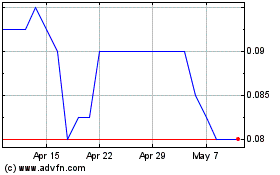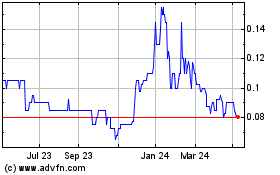TIDMKAT
RNS Number : 1599P
Katoro Gold PLC
08 October 2019
Katoro Gold plc (Incorporated in England and Wales)
(Registration Number: 9306219)
Share code on AIM: KAT
ISIN: GB00BSNBL022
("Katoro" or "the Company")
Dated: 8 October 2019
Katoro Gold PLC ('Katoro' or the 'Company')
Haneti Project - Exploration Potential
Katoro Gold PLC (AIM: KAT), the Tanzanian focused exploration
and development company, is pleased to provide an update on the
Company's Haneti project ('Haneti or the 'Project'), outlining the
exploration potential of the Project.
Louis Coetzee, Executive Chairman of Katoro Gold plc commented:
"The Haneti project is approximately 5,000 sq. km in size and
represents, in the Board's view, a very interesting exploration
opportunity and we are developing innovative approaches to
capitalise on the value Haneti represents to our business.
Within the boundaries of this 5,000 sq. km project, Katoro have
identified precious, base and strategic metal prospectivity and, in
the opinion of the Katoro Board, Haneti is capable of delivering a
number of discrete large-scale exploration and development
opportunities.
I look forward to articulating our project strategies and
operational plans in the coming weeks."
Highlights:
-- Haneti is a polymetallic system with identified potential for
nickel (sulphide and laterite), Platinum Group Metals ('PGMs'),
copper, gold, lithium and rare earth elements ("REEs");
-- The principle target zone is an 80 km long ultramafic belt
with grades from surface sampling of up to 13.6% nickel and 2.33
g/t combined platinum and palladium
o Nickel and palladium have experienced significant price
strength of late with nickel now trading at circa $17,600/tonne and
palladium at $1,637/ounce;
-- Within the 80 km ultramafic belt is the principle target,
Mihanza Hill, where 2015 geophysical work identified significant
extensions to nickel sulphide prospective target rock formations
and geochemical interpretation has identified prospectivity for
chonolith type nickel-copper-PGM mineralisation;
o Mihanza Hill is believed by the Company, based on desktop work
undertaken, to have the potential to host a similar style of
mineralisation to the Sipa Resources Limited (ASX:SRI) Akelikongo
nickel project in Uganda;
-- Also, within the Haneti licence area there is identified
greenstone gold potential to the west, where there is extensive
artisanal gold mining in an area a few kilometres to the east of
Shanta Gold's 0.7 million ounce Singida project;
-- Furthermore, the Project has the potential for lithium,
tantalum niobium and REE mineralisation demonstrated by host
pegmatites in an area where sampling has returned a high-grade
sample of 2.6% lithium and strongly anomalous results in niobium
and tantalum;
-- Further information in respect of Haneti exploration plans
will be provided over the coming weeks with announcements in
respect of nickel-copper-PGM, gold and lithium-rare earth
exploration plans.
Haneti Project Background
-- Katoro's Haneti project covers an area of approximately 5,000
sq. km located in central Tanzania about 90 km north of the
country's administrative capital Dodoma and has excellent road
access.
-- The Project is favourably located for various styles of
mineralisation due to its geology comprising part of the margin of
the Tanzanian Craton (major c. 2.5 billion-year old crustal block)
where it has been overthrust by younger rocks as part of a major
crustal plate collision zone.
-- The Project has significant mineral discovery potential due
to this favourable geological setting and this has been
demonstrated by the results of historic exploration carried out
over the area by previous operators.
Haneti Project Mineralisation
Principal styles of mineralisation indicated for Haneti are
outlined below.
Nickel, Copper and PGMs
The Company has been undertaking a review and analysis of all
historic work completed on the Haneti project and believe that it
could host a chonolith type nickel sulphide deposit.
Prospectivity for nickel, copper and PGMs (e.g. platinum,
palladium, rhodium and others) is associated with a linear NW-SE
trending zone of iron and magnesium rich rocks (ultramafics), the
Haneti-Itiso Ultramafic Complex (HIUC), which cross-cuts the
project and extends over a distance of 80 km.
Exploration to date has focussed on the Ni-Cu-PGM mineral
potential of the Project with two well defined drill targets ready
for testing, one at a location where a surface sample returned
grades of 13.6% nickel, 0.4 ppm platinum and 1.9 ppm palladium from
an iron rich shallow pit sample. Geophysical and geochemical
processing and interpretation of exploration data by independent
consultants at this location have shown compelling evidence that
the rocks underlying this area are fertile for potential Ni-Cu-PGM
accumulations.
The Haneti project was the subject of an independent geochemical
interpretation in 2014, which identified the Mihanza Hill area as a
prime drill target for Ni-Cu-PGM mineralisation. The findings from
the geochemical interpretation report and the in-house review
thereon was sent to Perth based geophysical consultants, Western
Geophysics, for integration with recently acquired airborne
geophysical data (see below) to better understand the geology of
Haneti and to generate new target areas particularly for Ni-Cu-PGM
style mineralisation.
In 2012/13, the Geological Survey of Tanzania ('GST') conducted
a regional high resolution airborne geophysical survey which
included an area of approximately 12,000 sq. km. covering the
Haneti project and surrounding area. An independent geophysical
interpretation of the data by Australian consultants Western
Geophysics in 2015 provided improved resolution of the HIUC's 80 km
central zone and also identified extension to the HIUC comprising
mafic-ultramafic zones with strike lengths of 10-20 km (northwest
zone) and 30 km (southwest zone). This interpretation extended the
footprint of the known nickel sulphide prospective rocks on the
project and within adjacent areas.
At the primary target, Mihanza Hill, a high magnetic anomaly was
modelled by Western Geophysics using a 3D inversion modelling
technique to better understand how the magnetic signature varied
with depth. The results indicate that there is a considerable
'root' to the Mihanza Hill ultramafic outcrop, which points to a
large volume of rock that could have positive implications for the
differentiation of nickel sulphide rich magmas and provides a large
volume of nickel prospective target rock at this location.
Follow up soil sampling has since been undertaken in the central
part of the HIUC, the results of which were announced by Katoro on
20 May 2019. This extended the strike length of previously
identified high priority areas and the findings have been utilised
to inform planning for a proposed drill programme. Furthermore, it
also identified a new, previously unidentified exploration
target.
Following further review of the accumulated work undertaken, the
next step is to implement a drill programme for nickel sulphide at
two of the Project's key targets: Mihanza Hill and Mwaka Hill.
Planning for this drill programme, the commencement of which would
be subject to securing additional funding, is underway.
Gold
Greenstone gold potential has been demonstrated in the western
part of the Project, where there is on-going extensive artisanal
gold mining in an area proximal to Shanta Mining's circa 0.7
million-ounce Singida Project (located approximately 10 kilometres
to the west of the Project).
Greenstone hosted gold mineralisation is host to many of the
World's largest gold mines and more locally is found at Tanzania's
major gold mines such as Bulyanhulu and Geita located north of
Haneti in the Lake Victoria Greenstone Belt.
The next phase of work will be to identify priority target sub-
areas for detailed exploration within the large gold prospective
area on the Project through initial geophysical interpretation
studies.
Nickel Laterite
Nickel mineralisation is found from the weathered products of
the HIUC in the form of oxide mineralisation known as nickel
laterites on the central hill outcrops of the HIUC where there is
active artisanal mining for the semi-precious nickel mineral,
chrysoprase. The Project's potential to host economic quantities of
nickel as nickel laterites has not been fully evaluated from
exploration to date. The potential of Tanzania to host nickel
laterites is already clearly demonstrated by the Dutwa project in
northern Tanzania which contains an estimated 107 million tonnes at
0.9% nickel.
Further work to evaluate the nickel laterite potential would
comprise drilling across the known laterite areas on the Project to
characterise the depth, composition, grade and tonnage present.
Lithium, Tantalum, Niobium & REEs
Lithium, tantalum, niobium and REE mineralisation can associated
with the final stages of granite intrusions solidifying as linear
bodies of rocks known as pegmatites.
The potential for this style of mineralisation demonstrated by
the identification of host pegmatites in the region where a surface
sample at one location returned a geochemical analysis result of
2.6% lithium and strongly anomalous results in niobium and
tantalum. The grades from this sample are at potentially economic
values contingent on sufficient ore tonnages of similar grades
being discoverable.
The next phase of work here would be to identify the extent of
the prospective pegmatite rocks on the project and their potential
through mapping, trenching/sampling and ultimately drilling.
Current Haneti Project Ownership Structure
Katoro has a 75% interest in Haneti. Development of Haneti is
being advanced in tandem with its joint venture partner, Power
Metal Resources plc (LON:POW) ("Power Metal"), which has the
remaining 25% interest in Haneti and a right to acquire a further
10% interest from Katoro to increase its interest to 35%, through a
cash payment of GBP25,000 to Katoro, until 15 May 2020.
**ENDS**
For further information please visit www.katorogold.com or
contact:
Louis Coetzee louisc@katorogold.com Katoro Gold plc Executive Chairman
Richard Tulloch +44 (0) 20 7409 Strand Hanson Limited Nominated Adviser
Ritchie Balmer 3494
Georgia Langoulant
Nick Emerson +44 (0) 1483 413 SI Capital Ltd Broker
Sam Lomanto 500
Isabel de Salis +44 (0) 20 7236 St Brides Partners Investor and Media
Beth Melluish 1177 Ltd Relations Adviser
This information is provided by RNS, the news service of the
London Stock Exchange. RNS is approved by the Financial Conduct
Authority to act as a Primary Information Provider in the United
Kingdom. Terms and conditions relating to the use and distribution
of this information may apply. For further information, please
contact rns@lseg.com or visit www.rns.com.
END
UPDLLFVIIALTIIA
(END) Dow Jones Newswires
October 08, 2019 06:42 ET (10:42 GMT)
Katoro Gold (LSE:KAT)
Historical Stock Chart
From Mar 2024 to Apr 2024

Katoro Gold (LSE:KAT)
Historical Stock Chart
From Apr 2023 to Apr 2024
